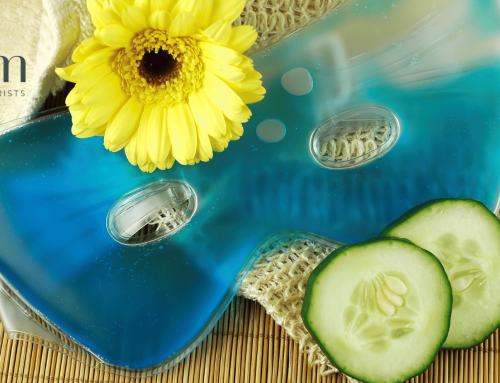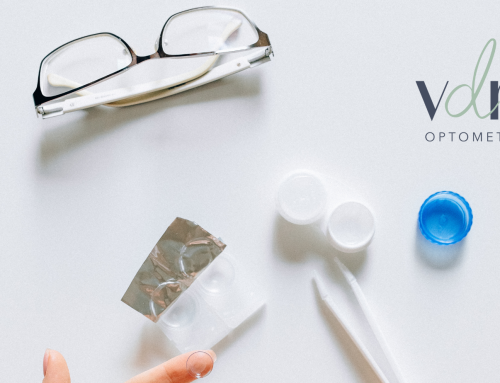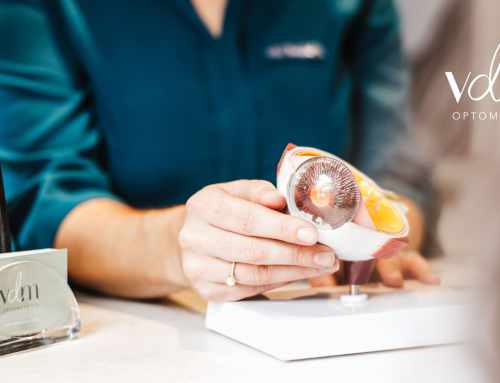Cosmetic Products and Dry Eye
Dry eye disease is one of the most common eye conditions. Dry eye syndrome is multi-factorial and can be exacerbated by external and environmental factors.
Cosmetics, including skincare products, can cause and exacerbate existing dry eye. The most common cause of ocular irritation with cosmetic products, is intolerance to active ingredients and improper hygiene and removal. The technique and area of application can also cause ocular irritation, as well as sharing products or using expired products.
Ingredients to avoid
Knowing which ingredients to avoid is not just a simple matter of recommending certain brands above others, but instead requires a thorough evaluation of the ingredient list. Be wary of any cosmetic products that do not list their ingredients on the package or their website. Formulations of products change frequently, so you might develop a sudden sensitivity to a product that you’ve used comfortably before. Always do a spot or patch test.
Terms like “hypo-allergenic”, “ophthalmologist or dermatologist tested”, “natural or organic”, “for sensitive eyes” are not regulated and are essentially meaningless buzzwords.
List of Ingredients to Avoid:
| Ingredients | Why they include them and why we should avoid them |
|---|---|
Benzalkonium chloride (BAK) |
Preservative, toxic to epithelial and goblet cells, disrupts tear film |
| Cinnamates | Fragrance, pro-inflammatory, activates TRPV1 and TRPA1 receptors on dendritic cells and corneal nerves |
DMDM hydantoin |
Formaldehyde donating preservative |
| EDTA | Preservative, prevents divalent cations Ca2+, Mg2+, disrupts tear film stability |
Formaldehyde |
Fragrances, irritants, can cause allergic reactions, contact dermatitis |
Hydroxymethylglycinate |
Formaldehyde donating preservative |
| Nylon fibers | Lengthening agent in mascara, foreign body-induced conjunctivitis |
| Parabens (methyl-, isobutyl-, propyl-) | Preservative, toxic to meibomian cells, xenoestrogens can potentially disrupt hormone function |
| Phenoxyethanol | Non-formaldehyde donating preservative (often marketed as “paraben-free”, meibomian cell death even at low concentrations |
| Phthalates | Plasticizer and solvent, decreased cell proliferation of corneal endothelial cells, pro-inflammatory |
| Prostaglandins | Lash growth, aerodynamic compromise, hyper-pigmentation, periorbital fat changes (1) |
Quaternium 15 |
Solvent, pro-inflammatory, aberrant activation of TRP receptors (1) |
| Vitamin A metabolites | Anti-aging skin products, in high concentrations can alter meibomian glands |
|
Sodium laureth sulfates |
Surfactant in many make-up removers, detergent that strips natural oils |
| Toluene | Solvent, pro-inflammatory, aberrant activation of TRP receptors (1) |
| Triclosan and Triclocarban | Preservative and stabilizer, pro-inflammatory, activation of TRPA1 receptors |
Urea |
Formaldehyde donating preservative |
Eyeliner Do’s and Don’ts
Eyeliner should not be applied on the delicate waterline of the eyelid, as it can block the meibomian glands and disrupt the tear film.
Permanent eyeliner around the ocular area can potentially cause dermatitis, tear film instability and meibomian gland blockage. The ink can contain harmful metals and pigments. Improper technique by the aesthetician can cause ocular injury.
Lashes – serums and extensions
Tampering with the normal lashes can affect the ocular comfort and health. Our lashes are important in maintaining eye health – it keeps dust out of the eyes, reduce tear film evaporation and redirect the flow of air. The optimal lash length is one-third of the width of the eye. Longer lashes (false lashes or extensions) direct the flow of air on to the ocular surface, worsening dry eye symptoms.
Lash serums with prostaglandin, are very effective, but side effects include hyperpigmentation of the eyelid and iris, dermatitis, orbital fat atrophy and meibomian gland dysfunction.
The glues used to adhere false lashes and extensions can cause contact dermatitis and inflammation due to their cyanoacrylate-like adhesives. These glues contain formaldehyde-emitting compounds known to be irritating to the ocular surface. In addition, people with fake lashes are less likely to perform proper eyelid hygiene and thus more likely to develop blepharitis.
Eyelid hygiene
A recent study in the UK showed that 1 out of 4 women do not remove their makeup at night. Many make-up removers contain detergents that irritate the eye and disrupt the tear film. Oil-based products like argan oil or jojoba oil are better options.
Make-up brushes and sponges must be cleaned every 2 to 3 weeks. Cosmetic products and applicators should NEVER be shared with other people, as this can increase the risk of ocular infection.
Using expired cosmetic products can disrupt the tear film and carries an increased risk of ocular infection.






